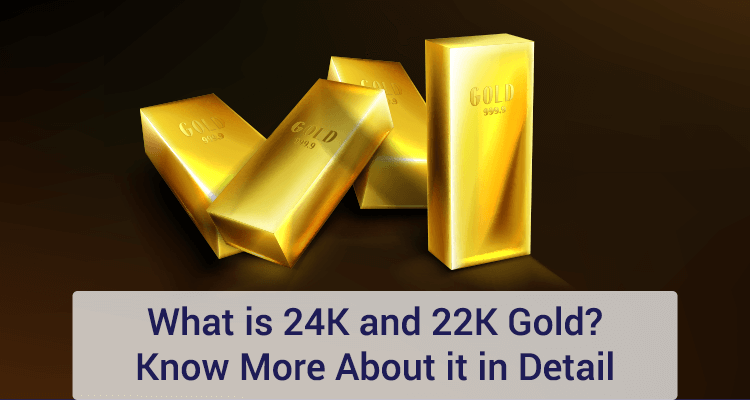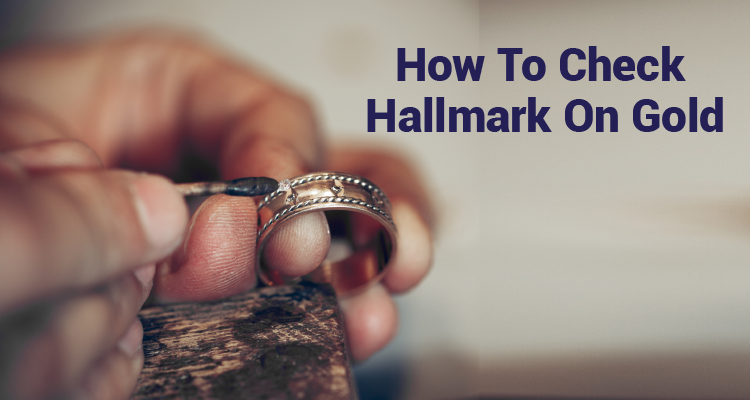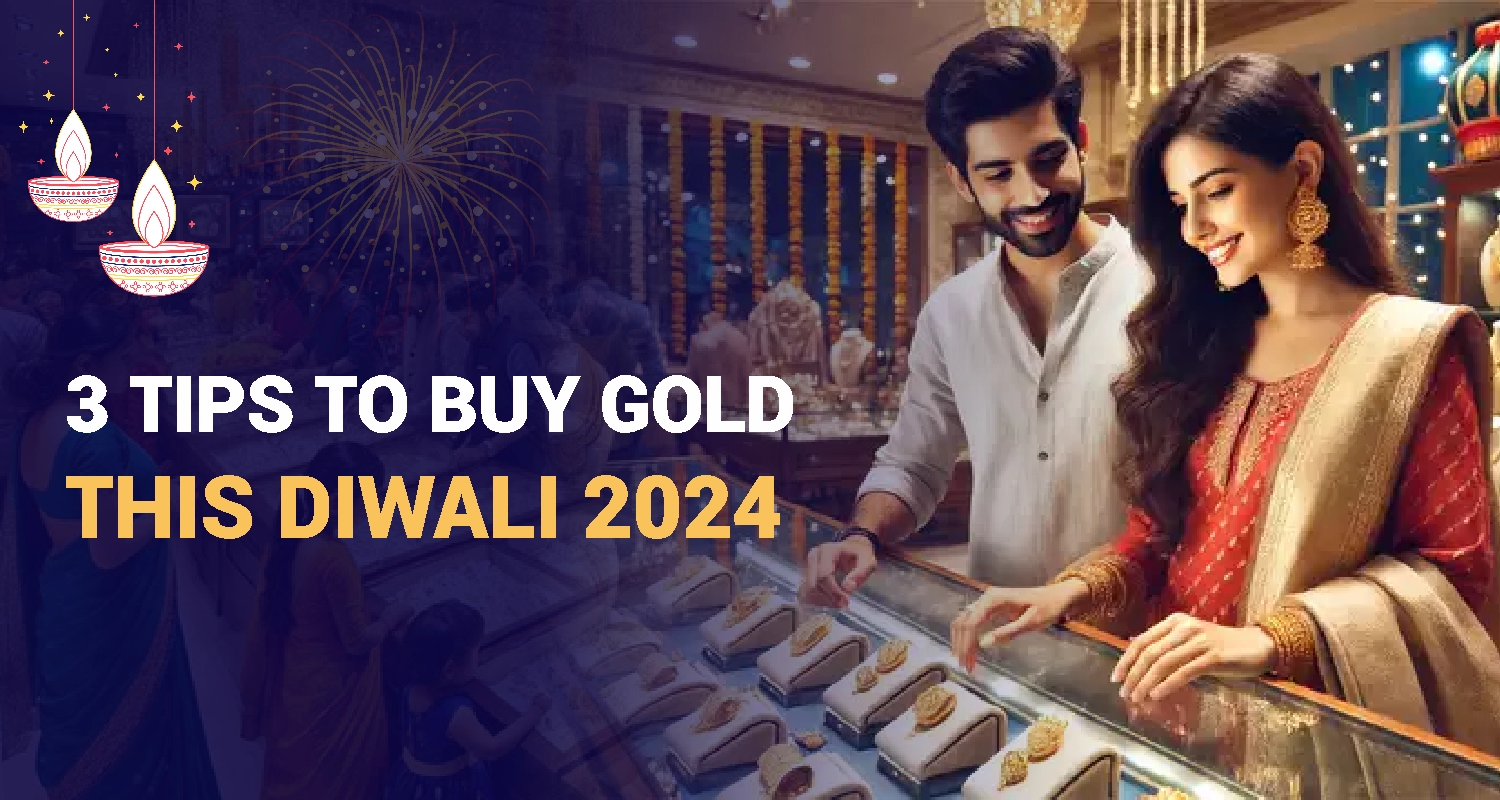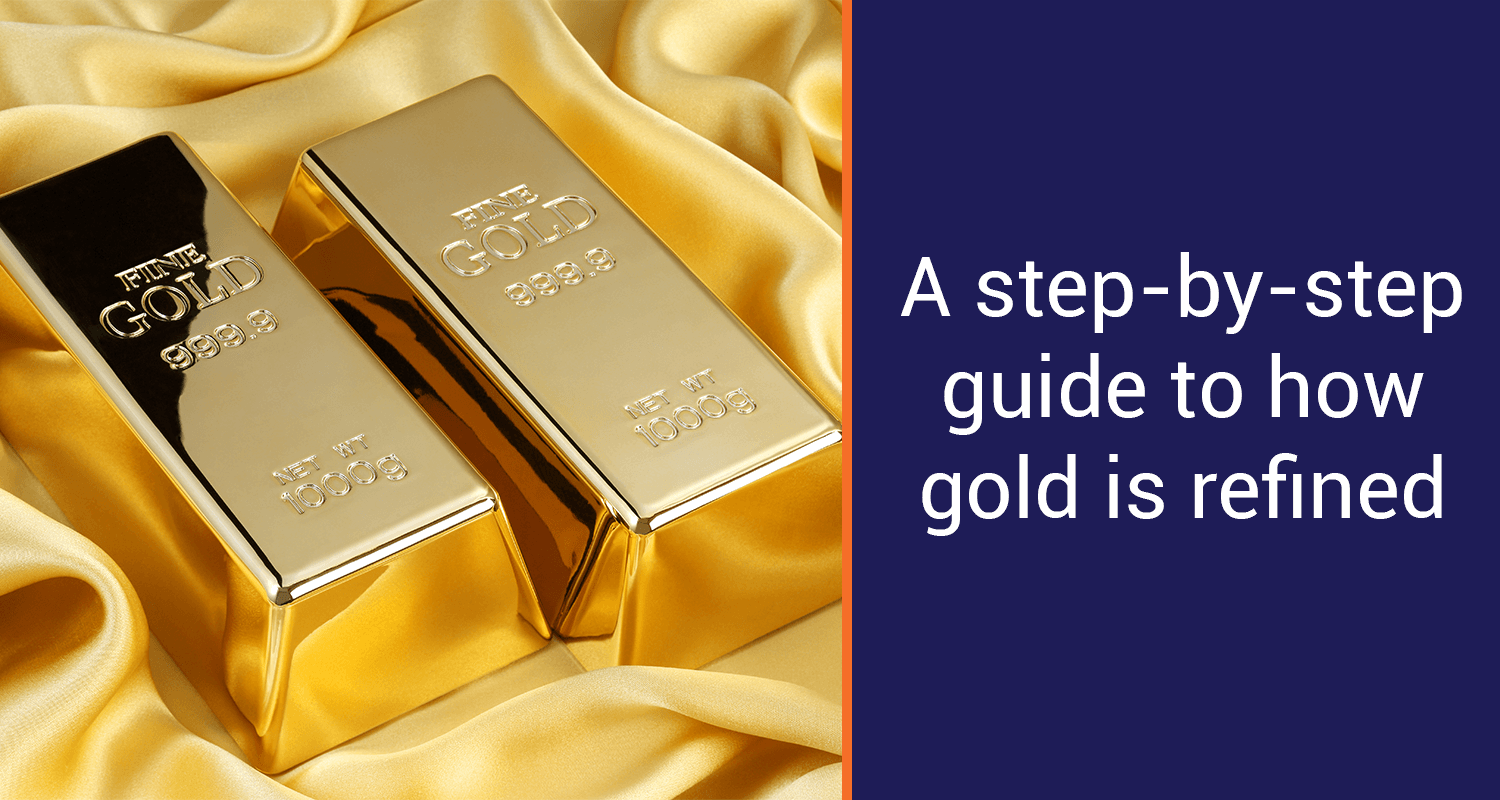Check the Difference Between 24k and 22k Gold

In India, gold is not just a precious metal; it is an integral part of celebrations, weddings, festivals, and religious ceremonies. However, when it comes to buying or investing in gold, purity matters significantly.
The purity of gold is primarily measured in karats (k). The karat system indicates how much pure gold is included in a piece of jewellery or gold item. The purer the gold, the greater the karat value. The most popular carat values in India are 24, 22, 18, and 14. Pure gold is considered 24k, containing 99.9% gold, while the remaining karats include alloy metals like copper or silver for added strength and durability. The Bureau of Indian Standards (BIS) in India certifies their purity and quality by hallmarking them.
These hallmarks certify the gold's purity and act as a guarantee of its authenticity. Buying hallmarked gold ensures you get what you pay for and protects you from counterfeit or low-quality gold. The higher the purity, the more expensive the gold. Therefore, when buying gold for investment purposes, it is advisable to choose higher purity gold, such as 24k or 22k, as it carries a higher intrinsic value.
What Does Karat Mean In Gold Quality?
When buying gold, the jeweller or the selling entity always denotes the gold articles in karat or carat. Karat or ‘K’ is a measuring unit for the quality of the gold and its pieces, such as gold bars, coins, jewellery, etc.
Denoting gold in carats is important as gold looks the same visibly, making it difficult to determine the quality by looking at the visible aspects. Thus, it is best to look at the karats of the gold before buying any gold articles or getting the best price for selling the gold.
In India, gold articles are measured through a karat scale which ranges from 0-24. Here zero karat would be a fake gold ornament, while 24 carats is of the highest possible quality.
Since gold is a very soft metal, it must be mixed with other metals, such as nickel, copper, silver, etc., to convert it into gold articles. The karat measures the ratio in which different metals are mixed with gold. The higher the carats, the lower the number of other metals in the resulting gold articles.
In India, 22-carat and 24-carat gold are the most widely bought gold quality. Hence, it is imperative to understand what is the difference between 22-carat and 24-carat gold.
What Is 22K Gold?
22k gold, or 22-carat gold, is a gold mixture combining two parts of other alloys/metals, including silver, nickel, zinc, and copper. 22-carat gold is the next best quality to 24-carat gold and is the most widely used gold to make jewellery and other gold articles.
22-carat gold is also called 916 gold as it contains pure gold with a percentage of 91.67%. Due to the metal composition, the remaining portion is of other mixed metals to make it more durable. The price of 22-carat gold is lower than that of 24-carat gold in the domestic and international markets.
The 22-carat gold price fluctuates daily depending on numerous factors such as demand and supply, import price, etc. Before buying and selling, it is wise to seek the answer to what is 22k gold price today.
Get Gold Loan at the comfort of your home
Apply NowWhat Is 24K Gold?
24-k gold or 24-carat gold is the purest form of gold available to customers or jewellers in the domestic and international markets. 24-carat gold contains 99,99% gold with no other mixed metal such as copper, nickel, zinc, or silver. However, 24-carat gold does not have 100% gold but only 99.99%. Hence, 24-carat gold is only extracted at 99.99% purity from gold ores in solid form.
Gold articles made from 24-carat gold are of the highest purity and are considered the best in quality. However, 24-carat gold is less popular to make gold jewellery due to its non-durable nature. Instead, it is used for electrical devices and other medical equipment.
Check the Difference Between 22K and 24k Gold?
The difference between 24K and 22K is, 24K gold is 99.99% pure and highly valuable but soft, making it unsuitable for regular wear. 22K gold is 91.67% pure, with added metals like copper for extra strength, making it more durable for jewellery.
| Parameter | 22k Gold | 24k Gold |
|---|---|---|
| Purity | 91.67% | 99.9% |
| Purpose | Widely used to make jewellery as it is more durable because of the presence of other metals. | Suitable for investment purposes as it is delicate in nature and non-durable. |
| Price | The price is always lower than 24k gold. | The price is the highest among all gold qualities. |
| Usage | Used in making jewellery and other gold articles. | Used in electrical and medical equipment. |
| Durability | 22K gold is the most durable as it contains other metals such as zinc, nickel, copper, etc. | 24k gold is less stable than 22k gold as it is too delicate to resist wear and tear. |
Gold Carat and its Purity:
|
Number of Carat |
Gold Purity (%) |
|
9K |
37.5 |
|
10K |
41.7 |
|
12K |
50.0 |
|
14K |
58.3 |
|
18K |
75.0 |
|
22K |
91.7 |
|
24K |
99.9 |
Avail Of An Ideal Gold Loan With IIFL Finance
With IIFL Gold loan, you get industry-best benefits through our process designed to offer instant funds based on the value of your gold within 30 minutes of application. IIFL Finance Gold Loans come with the lowest fee and charges, making it the most affordable loan scheme available. With a transparent fee structure, there are no hidden costs you have to incur after applying for the loan with IIFL Finance.
Why is 22K gold preferred over 24K gold?
While both 22 karat (22K) and 24 karat (24K) gold have their own merits, 22K gold is often preferred for certain applications, especially in jewellery, for a few reasons:
- Durability: 22K gold is alloyed with other metals (usually copper or silver) to make it more durable. Pure 24K gold is soft and can be easily scratched or damaged, making it less suitable for everyday wear.
- Colour and Appearance: The alloying process in 22K gold imparts a richer and deeper gold color compared to 24K gold. This can be aesthetically pleasing for jewellery, providing a warm and vibrant appearance.
- Affordability: Since 22K gold contains a lower percentage of pure gold, it is generally more affordable than 24K gold. This can make it a more practical choice for those looking for gold jewellery without the higher cost associated with pure gold.
Ultimately, figuring out what is the difference between 22k and 24k gold and which one to prefer among the two depends on individual tastes, the intended use of the gold (jewellery or investment), and budget considerations.
Which is the Better Investment Option? 24K or 22K?
In terms of investment, the choice between 22 karat (22K) and 24 karat (24K) gold depends on your investment goals and risk tolerance.
24K Gold:
- Purity: 24 karat gold meaning absolutely pure gold, makes it a straightforward investment in the precious metal itself.
- Market Value: The market value of 24K gold is directly linked to the current price of gold in the market.
- Liquidity: Pure gold is highly liquid and can be easily sold or traded globally.
- Long-Term Value: It may be considered a store of value over the long term.
22K Gold:
- Durability: The alloy in 22K gold provides durability, making it more suitable for everyday wear as jewellery.
- Aesthetics: The alloy also gives it a richer gold colour, which some individuals find more visually appealing.
- Market Value: While the market value is still influenced by the price of gold, it may not be as pure and may have additional value based on craftsmanship and design.
- Liquidity: 22K gold is generally liquid but may have additional factors influencing its value beyond the gold content.
Both options can be part of a diversified investment portfolio, but 24K gold might be seen as a more direct and straightforward investment in the metal itself. However, it's crucial to consider factors such as storage costs, market trends, and personal preferences when making investment decisions. Consulting with a financial advisor can provide tailored advice based on your specific financial goals.
Which Karat Gold is best for Jewellery?
When it comes to crafting jewellry, 22 karat gold proves to be a more suitable choice even though the 22 carat gold purity percentage is lesser than that of 24 carat. This is attributed to the fact that 24 karat gold exists in a pure, malleable state, making jewellery crafted from it exceptionally soft and prone to breakage. Consequently, 22 karat gold emerges as a more prudent investment for jewellery, as it undergoes alloying with metals like zinc, copper, and silver, enhancing its hardness compared to 24 karat gold. Opting for 22 karat gold not only ensures durability but also contributes to obtaining better value when selling the jewellry.
Moreover, the choice between gold karats is influenced by the type of jewellry one desires and the intricacy of the design. For everyday wear or intricate pieces, individuals often lean towards 14 karat or 18 karat gold. The versatility of these karats addresses the need for durability and aesthetic appeal. In certain instances, even 22 karat gold may be deemed too soft to hold gemstones securely.
Applications of 24 karat gold
24 karat gold or 24k means pure gold and is often used in jewellery and investment products. Its malleability makes it suitable for intricate jewellery designs, but it can be too soft for everyday wear. Investment-wise, some people prefer 24 karat gold coins or bars as a store of value. It is also used in medical related stull such as tiny gold wires in teeth.
Applications of 22 karat gold
If you’re wondering what is 22 carat gold and what is it commonly used for, then let us tell you that 22 karat gold is an alloy of 22 parts gold and 2 parts other metals (usually copper or silver). This alloy is more durable than 24 karat gold, making it a popular choice for traditional gold jewellery. The added metals provide strength and reduce the risk of scratches or dents.
Conclusion
Understanding the applications, characteristics and difference between 24 carat and 22 carat gold is essential for making informed decisions, whether for jewellery or investment purposes. While 24K gold purity percentage determines its investment preference, 22K gold emerges as the preferred choice for jewellery, combining durability and aesthetic appeal. Ultimately, the choice between 24K and 22K gold, and the decision to invest in jewellery or pure gold, should be made based on a careful consideration of your personal preferences, budget, and long-term financial goals.
As you explore the world of gold investments, consider the Gold Loan app from IIFL Finance, which provides a convenient and secure platform for managing your gold assets. Whether you lean towards the purity of 24K or the durability of 22K, the app offers a streamlined approach to unlocking the value of your gold assets, aligning with your financial objectives.
FAQs:
Q.1: What are the interest rates on IIFL Finance Gold Loans?
Ans: The gold loan interest rates are between 6.48% - 27% p.a.
Q.2: How can I apply for a Gold Loan with IIFL Finance?
Ans: Getting a gold loan from IIFL Finance is super easy! Click on the ‘Apply Now’ button mentioned above and fill in all the required details to get a loan approved in few minutes.
Q.3: What is the loan tenure for the IIFL Finance gold loan?
Ans: The loan tenure for an gold loan is according to the market.
Q.4: What is the difference between 24-karat gold and 22-karat gold?
Ans: In contrast to 22k gold, which contains 8.3% other metals like copper or silver and 91.7% gold, 24k gold is considered pure gold because it contains 99.9% gold. Due to its extreme malleability and softness, pure gold is less suitable for some jewellery applications where durability is an issue. Because 22k gold contains alloy metals that make it stronger and tougher, it can be used for various jewellery products. As a result, 24k gold is frequently utilised to make gold bars and coins or for investment purposes. On the other hand, 22k gold is favoured by many worldwide and is frequently used in traditional jewellery designs.
Q.5: How much pure gold is present in 22-karat and 24-karat?
Ans: 24-karat gold contains 99.9% pure gold, while 22-karat gold contains 91.7% pure gold.
Q.6: What to check while buying gold jewellery?
Ans: When buying gold jewellery, look for purity in karats, proper weight and hallmarking, Also check for the jeweller's return policy and warranty and proper documentation specifying the gold's purity, weight, and details.
Q.7: What type of gold is used in making jewellery?
Ans: 22k gold is used in jewellery as it contains 8.3 per cent mixed alloys, making it stronger and tougher.
Q.8: Which type of gold is suitable for daily use?
Ans: 22k gold is suitable for daily use as jewellery cannot be made out of 24k gold.
Q9. Is 9K gold good quality?
Ans. Yes, 9K gold is a good choice for everyday jewellery. While it contains less gold (37.5%) than higher karat options, this makes it more durable for daily wear. The difference between 24k and 22k gold is all about purity. 24k gold is the purest (99%), but too soft for jewellery. 22k gold is 917% gold, a slightly less expensive option with a touch more durability than 24k.
Q10. Which karat gold is best for daily use and is durable?
Ans. For everyday wear, 14k gold strikes the best balance. It contains 58.3% gold, making it more durable than higher karat options like 18k (75%) and 24k (pure). This added strength allows it to handle daily bumps and scratches better. While 9k (37.5%) is also durable, it has a lower gold content, affecting its shine and colour.
Q11. Why is 24k gold not used in jewellery?
Ans. Due to its exceptional purity, 24k gold is very soft and malleable. It scratches and bends easily, making it unsuitable for everyday wear in jewellery.
Q12. What are the benefits of 22k gold?
Ans. The addition of other metals in 22k gold enhances its durability. It can withstand daily wear and tear better than 24k gold, making it ideal for crafting beautiful and long-lasting jewellery.
Q13. What does the colour difference look like?
Ans. The difference in colour between 24k and 22k gold is subtle. Both boast a rich yellow hue, but 22k gold might have a slightly less intense shade due to the alloying metals.
Q14. Where are 24k and 22k gold used?
Ans. Due to its high purity, 24k gold is primarily used for investment purposes in the form of bars and coins. 22k gold, on the other hand, is the gold standard for crafting beautiful and long-lasting jewellery.
Q15. How are gold prices determined?
Ans. Gold prices are influenced by various external factors, such as the exchange rate of the Indian currency against the US dollar, oil prices, significant political events, and more. Internal factors, including government policies, interest rates, and the demand for gold, also impact gold prices in India.
Q16. Is gold important for a nation's economy?
Ans. Yes, gold is significant for a nation's economy, as it serves as an indicator of economic health.
Q17. What to check while buying gold jewellery?
Ans. When purchasing gold jewellery, consider the following points. Verify the purity of the gold, such as whether it is 22 karat or 24 karat. Ensure the ornament is hallmarked, and finally, check the making charges applied.
Get Gold Loan at the comfort of your home
Apply NowDisclaimer: The information contained in this post is for general information purposes only. IIFL Finance Limited (including its associates and affiliates) ("the Company") assumes no liability or responsibility for any errors or omissions in the contents of this post and under no circumstances shall the Company be liable for any damage, loss, injury or disappointment etc. suffered by any reader. All information in this post is provided "as is", with no guarantee of completeness, accuracy, timeliness or of the results etc. obtained from the use of this information, and without warranty of any kind, express or implied, including, but not limited to warranties of performance, merchantability and fitness for a particular purpose. Given the changing nature of laws, rules and regulations, there may be delays, omissions or inaccuracies in the information contained in this post. The information on this post is provided with the understanding that the Company is not herein engaged in rendering legal, accounting, tax, or other professional advice and services. As such, it should not be used as a substitute for consultation with professional accounting, tax, legal or other competent advisers. This post may contain views and opinions which are those of the authors and do not necessarily reflect the official policy or position of any other agency or organization. This post may also contain links to external websites that are not provided or maintained by or in any way affiliated with the Company and the Company does not guarantee the accuracy, relevance, timeliness, or completeness of any information on these external websites. Any/ all (Gold/ Personal/ Business) loan product specifications and information that maybe stated in this post are subject to change from time to time, readers are advised to reach out to the Company for current specifications of the said (Gold/ Personal/ Business) loan.




